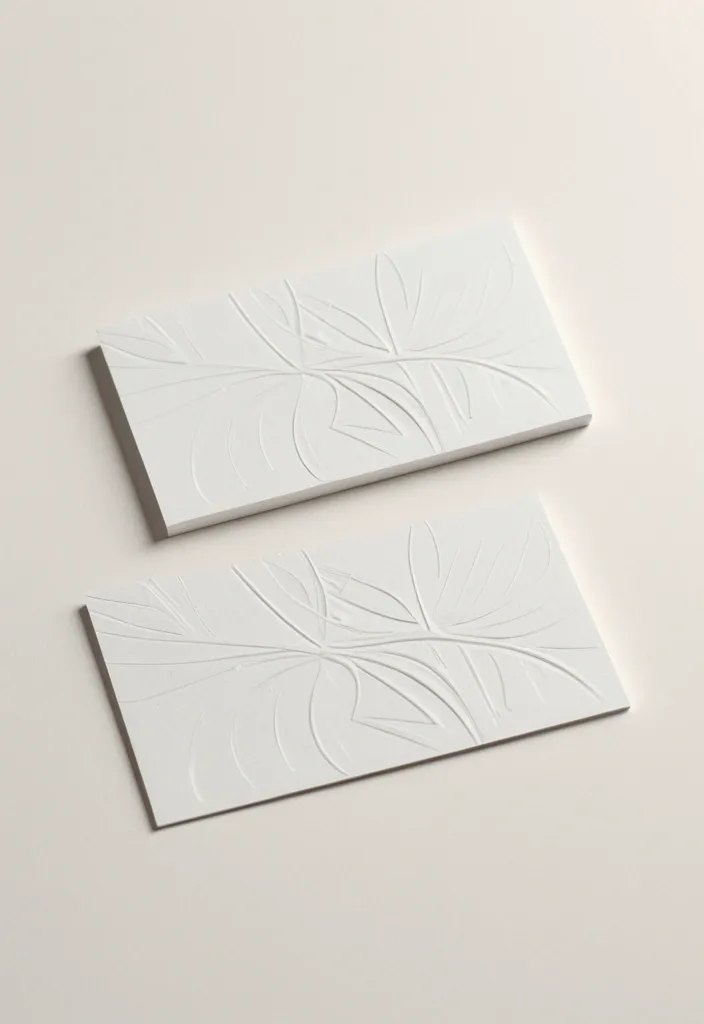Search Results for sin
Explore AI generated designs, images, art and prompts by top community artists and designers.

Create a vertical flyer for Instagram (1080x1350) with a minimalist and sophisticated look , using a white or light rose background. The layout should elegantly and balancedly highlight a complete mobile (spaceX) (fully visible) and money in Rs , 100 bills. Use text boxes with a Mature woman wearing a traditional Indian outfit with intricate embroidery and vibrant colors , paired with neutral face makeup and a subtle smile , featuring dusky skin tone , beautiful makeup with defined brows , luscious lashes , and rosy lips , posing in a stylish setting with a soft focus background and thin gold or light gray borders to separate the text from the background and maintain a clean aesthetic. 🖼️ VISUAL COMPOSITION 📍 TOP Centered text box at the top with a translucent white background and thin gold border: 🎉 SPECIAL FESTIVAL OFFER (serif or modern , elegant font) 📱 MAIN BLOCK (IMAGE) Center a large image of a lemon color new mobile device (spaceX) , completely visible , with a slight soft shadow around it to highlight it from the background. Next to the mobile (spaceX) , slightly overlapping , add stacked or flying R$100 bills , with a touch of soft shine to give an elegant contrast. 📝 CENTRAL TITLE Just below the images , in a box with a white background and gold border: 📲 Win an mobile (spaceX) or Rs , 3 , 000 via Pix (large , clean and sophisticated font) 💰 PRICE BLOCK Smaller box below the title , with a very light beige background and soft gray border: 💸 RAFFLE: R$20 per number (“R$20” highlighted in bold font) 📋 RULES Text box with a translucent white background , thin border , discreet icons: ✅ 1. Like this post ❤️ ✅ 2. Tag 2 friends 👯 ✅ 3. Follow the profile 📲 ✅ 4. Message me on Direct to secure your number 💬 (organize in 2 columns or in a list , generous spacing) 📅 FOOTER – DATE AND CTA Thin gold line separating the footer. Centered text box: 📆 Giveaway on January 16th , 2026 (light and elegant font) Button with dark rose background , white text: PARTICIPATE NOW 🧠 STYLE DETAILS ✔ Text boxes with light background and thin borders to maintain easy readability ✔ Small and delicate icons (heart , friends , direct message , calendar) ✔ Ample spacing between blocks ✔ Use of subtle shadows on images to add depth ,

A stunning 8K hyperrealistic , highly detailed cinematic photograph , captured from a dramatic high-wide angle. The image features a full-body , full-volume Venezuelan woman posing gracefully in an elegant , flowing dress that accentuates her refined silhouette. She is set against a breathtaking , enigmatic landscape inspired by the most prestigious designer of nature , goddess Aphrodite. The scenery features lush , vibrant foliage , delicate flowers , and shimmering , mystical elements that evoke divine , otherworldly beauty and deep harmony , illuminated by a soft , ethereal , and somewhat hazy glow , enhancing a truly mysterious atmosphere. The woman’s posture exudes confidence and grace , with intricate details in her dress , hair , and accessories , capturing a sense of timeless elegance. The scene is rendered in a highly detailed , realistic style with a pronounced touch of fantasy , emphasizing luminous textures and harmonious , subtly shadowed composition. At the bottom of the image , include a radiant , opulent 3D inscription of the name "Elçin Sangu , " crafted in a neoclassical style with elegant , flowing lines , reminiscent of Cervantine artistry , adding a regal and energetic glow that enhances the overall sophistication and vitality of the scene. The visual framing combines a balanced composition with a focus on the woman as the central figure , surrounded by the divine landscape , creating a majestic and captivating , mysterious atmosphere. The lighting is soft , deeply luminous , and otherworldly , highlighting the divine inspiration behind the scene and emphasizing the goddess-like aura of the woman within this enchanting , almost secretive , environment. ,


{ "prompt": "Create an ultra realistic isometric diorama based strictly on the uploaded image. Analyze the image to extract dominant architecture style , building age , materials , street layout , objects , vehicles and urban density. Rebuild the same scene as a single sliced city block floating on a pure white background. Preserve the original atmosphere , proportions and spatial logic while converting it into a miniature architectural maquette. Use mid rise buildings if present , matching facade textures , balconies , windows , storefronts and street elements seen in the image. Keep only elements visible in the source image. Remove anything not present. Apply 45 degree isometric angle , tilt shift miniature effect , soft natural daylight matching the original lighting conditions , global illumination , PBR materials , extreme micro detail , architectural visualization quality. Clean studio lighting. No sky , no horizon." , "negative_prompt": "invented objects , extra buildings , fantasy elements , cartoon , anime , illustration , low poly , flat shading , fisheye , distortion , surreal details , inconsistent scale , random props" , "aspect_ratio": "3:2" , "style": "photorealistic" , "quality": "high" } ,

This is a typical court painting in the style of Wang Ximeng from the Northern Song Dynasty around 1000 AD , rendered in the blue-green landscape style , with exquisite and high-quality mounting. At the center of the painting is a majestic mountain , with continuous mountain ranges on both sides and in the distance. At the foot of the mountain , a stream meanders , and two monks are crossing a small bridge over it. A faint path winds its way up the mountain , sometimes disappearing into the clouds , sometimes suddenly appearing before the eaves of a temple half-hidden by the massive mountain , where monks are entering the temple gate. The surrounding mountains are steep and imposing , with several pine trees growing on the cliffs , blocking the early morning sun. The mountaintop is almost entirely covered by clouds , yet through gaps in the mist , a corner of a pure white jade palace , seemingly a celestial palace , is visible , with cranes appearing to fly nearby in the clouds. The exaggerated composition of this Chinese painting creates a sense of contrast between the human world and the celestial realm , from the foot of the mountain to the summit. Vertical 9:16 , ultra-high definition. ,

A whimsical cityscape constructed entirely from oversized , iPhone screes , with all apps icons fluttering in a gentle breeze like icons. Road of social-media icons flow through the streets , and streetlights are shaped like glowing apple logo. derelict alien vessel that resembles a skeletal whale fly between the iPhone-buildings. This is rendered in a surreal , abstract style , focusing on the unexpected juxtaposition of elements and a dreamlike atmosphere , reminiscent of fine art iPhone illustrations. ,

A modern , minimalist logo for a fintech bank named "VECTOR". The design should be based on a stylized , geometric letter "V". The left side of the "V" should be a solid , stable vertical line , symbolizing a foundation. The right side should be a dynamic , upward-slanting diagonal line , creating a sense of growth and direction. Combine these elements into a single , cohesive , and elegant abstract mark. On a white background use a deep , trustworthy blue (#0F2B5B) as the primary color , with an option to add a vibrant orange gradient (#FF7A00 to #FFB800) as an accent on the diagonal line to symbolize energy. The style is clean , professional , and sleek , suitable for a digital-first financial institution. No icons of coins , globes , or animals. --style raw --v 6.0 ,

A modern , minimalist logo for a fintech bank named "VECTOR". The design should be based on a stylized , geometric letter "V". The left side of the "V" should be a solid , stable vertical line , symbolizing a foundation. The right side should be a dynamic , upward-slanting diagonal line , creating a sense of growth and direction. Combine these elements into a single , cohesive , and elegant abstract mark. On a white background use a deep , trustworthy blue (#0F2B5B) as the primary color , with an option to add a vibrant orange gradient (#FF7A00 to #FFB800) as an accent on the diagonal line to symbolize energy. The style is clean , professional , and sleek , suitable for a digital-first financial institution. No icons of coins , globes , or animals. --style raw --v 6.0 ,

A modern , minimalist logo for a fintech bank named "VECTOR". The design should be based on a stylized , geometric letter "V". The left side of the "V" should be a solid , stable vertical line , symbolizing a foundation. The right side should be a dynamic , upward-slanting diagonal line , creating a sense of growth and direction. Combine these elements into a single , cohesive , and elegant abstract mark. Use a deep , trustworthy blue (#0F2B5B) as the primary color , with an option to add a vibrant orange gradient (#FF7A00 to #FFB800) as an accent on the diagonal line to symbolize energy. The style is clean , professional , and sleek , suitable for a digital-first financial institution. No icons of coins , globes , or animals. --style raw --v 6.0 ,

Expressive watercolor painting , cyberpunk city street at night , a lone figure in black studded leather clothing , illuminated by neon signs and dystopian streetlights. Heavy rain , dark and gloomy atmosphere , with visible brushstrokes and bleeding colors in the style of Zdzislaw Beksinski , Syd Mead , and Kwanghio. ar-9:16 ,

Top-view minimalistic mockup of two blank white business cards , clean and modern layout similar to a professional business card design. Both cards are fully white with no text , no logos , no icons , no QR codes. Flat 2D look without perspective distortion. No background elements , no table texture , no plants — pure white backdrop. Soft , even lighting , high-resolution , crisp edges. ,

Top-view minimalistic mockup of two blank white business cards , clean and modern layout similar to a professional business card design. Both cards are fully white with no text , no logos , no icons , no QR codes. Flat 2D look without perspective distortion. No background elements , no table texture , no plants — pure white backdrop. Soft , even lighting , high-resolution , crisp edges. ,

Top-view minimalistic mockup of two blank white business cards , clean and modern layout similar to a professional business card design. Both cards are fully white with no text , no logos , no icons , no QR codes. Flat 2D look without perspective distortion. No background elements , no table texture , no plants — pure white backdrop. Soft , even lighting , high-resolution , crisp edges. ,

Camera Perspective: Shot taken from a smartphone held by the Reference Subject , classic front-facing camera distortion , arm slightly extended , natural selfie angle. Subject 1 (Reference: upload photo): Identical to the person in the reference photo. Next to him , leaning towards the selfie frame: Shubman Gill (Indian international cricketer) , smiling confidently , wearing the official Indian cricket suite , with all authentic sponsor logos , colors , textures , patches , and details. Background: Packed Indian cricket viewer crowd cheering , flags waving , podium atmosphere. Champagne Celebration: Champagne droplets in the air , light reflecting off the spray behind you both. Lighting: Bright sunlight on match day , soft reflections on his sunglasses , even selfie lighting on both faces. Style: Slightly rustic , subtle film grain , energetic podium atmosphere. Both characters should appear together , as if posing for a selfie. ,

Minimalistic mockup of two white business cards lying on a light textured surface. Both cards are fully visible in the frame. One card slightly overlaps the other. Soft realistic shadows clearly show that there are two separate cards. Subtle paper texture is visible on both cards. One card has a very light embossed abstract pattern (leaf-like curves) barely noticeable , the other is blank. Neutral soft lighting , high-resolution , clean aesthetic , modern design mockup ,

An art nouveau goddess emerging from a cascade of poppies , mistletoe , and peonies in blazing oranges , deep purples , and hot pinks , a stunning black queen , adorned in an intricately beaded gown that shimmers like the night sky , dancing gracefully with her devoted Northern King beneath a canopy of twinkling fairy lights. The atmosphere is electric , filled with warmth and joy as soft candlelight flickers around the grand hall , casting golden glows on the richly decorated walls , surrounded by sinuous gold filigree and stained glass waves , illustrated in decorative symbolist style with elegant curves and rich chromatic layers. Rendered in a luminous digital art style with surrealist undertones. ,

An art nouveau goddess emerging from a cascade of poppies , dahlias , and peonies in blazing oranges , deep purples , and hot pinks , a whimsical fairy , adorned with flowers and dewdrop jewelry , tends to a miniature garden atop a colossal , moss-covered whale's back as it gracefully swims through a soft-focus , dreamlike sky , majestic , sweeping seascapes , surrounded by sinuous gold filigree and stained glass motifs , illustrated in decorative symbolist style with elegant curves and rich chromatic layers. Rendered in a luminous digital art style with surrealist undertones. ,

An art nouveau goddess emerging from a cascade of poppies , dahlias , and peonies in blazing oranges , deep purples , and hot pinks , a girl walking through a field , in the style of ethereal trees , dark yellow and azure , majestic , sweeping seascapes , surrounded by sinuous gold filigree and stained glass motifs , illustrated in decorative symbolist style with elegant curves and rich chromatic layers ,

A stunning woman posing gracefully in an elegant , flowing dress that accentuates her refined silhouette , set against a breathtaking landscape inspired by the most prestigious designer of nature , goddess Aphrodite. The scenery features lush , vibrant foliage , delicate flowers , and shimmering elements that evoke divine beauty and harmony , with soft , glowing light enhancing the ethereal atmosphere. The woman’s posture exudes confidence and grace , with intricate details in her dress , hair , and accessories , capturing a sense of timeless elegance. The scene is rendered in a highly detailed , realistic style with a touch of fantasy , emphasizing luminous textures and harmonious composition. At the bottom of the image , include a radiant , opulent 3D inscription of the name "Elçin Sangu , " crafted in a neoclassical style with elegant , flowing lines , reminiscent of Cervantine artistry , adding a regal and energetic glow that enhances the overall sophistication and vitality of the scene. The visual framing combines a balanced composition with a focus on the woman as the central figure , surrounded by the divine landscape , creating a majestic and captivating atmosphere. The lighting is warm and luminous , highlighting the divine inspiration behind the scene and emphasizing the goddess-like aura of the woman. ,

Photorealistic full-length depiction of a 25-year-old beautiful pale redhead european face kitsune wearing sleek sport mini outfits , barefoot , walking in a serene Japanese forest , surrounded by lush green trees and vibrant foliage , with the warm sunlight casting a gentle glow on her face , in a cinematic style , showcasing her striking red hair , with intricate details on her sportswear and the forest surroundings , capturing the intimate moment ,

Photorealistic full-length depiction of a 25-year-old beautiful pale redhead european face kitsune wearing sleek sport mini outfits , barefoot , walking in a serene Japanese forest , surrounded by lush green trees and vibrant foliage , with the warm sunlight casting a gentle glow on her face , in a cinematic style , showcasing her striking red hair , with intricate details on her sportswear and the forest surroundings , capturing the intimate moment ,

Photorealistic full-length depiction of a 25-year-old beautiful pale redhead european face kitsune wearing sleek sport mini outfits , barefoot , walking in a serene Japanese forest , surrounded by lush green trees and vibrant foliage , with the warm sunlight casting a gentle glow on her face , in a cinematic style , showcasing her striking red hair , with intricate details on her sportswear and the forest surroundings , capturing the intimate moment ,

an oil painting featuring a powerful female warrior in a dynamic pose. She has long , flowing black hair and a determined expression. Her skin is light , and she has striking facial features with bold makeup. The character is adorned in a metallic silver and red armor , with intricate designs and a prominent chest plate. Her arms are wrapped in black and red fabric , and she holds a large , imposing sword with a weathered blade. The background is concrete grey and blood red , enhancing the dramatic and intense atmosphere of the scene. The overall composition is bold and visually striking , emphasizing strength and confidence. ,

Image is an oil digital illustration featuring a powerful female warrior in a dynamic pose. She has long , flowing black hair and a determined expression. Her skin is light , and she has striking facial features with bold makeup. The character is adorned in a metallic silver and red armor , with intricate designs and a prominent chest plate. Her arms are wrapped in black and red fabric , and she holds a large , imposing sword with a weathered blade. The background is concrete grey and blood red , enhancing the dramatic and intense atmosphere of the scene. The overall composition is bold and visually striking , emphasizing strength and confidence. ,

A hyper-realistic depiction of a Indian man piloting a large , a man attached in the uploaded reference image (Keep face of person 100% accurate from the reference image) , industrial-style Bullet Train in a relaxed pose. The Bullet Train retains its bulky and mechanical design , constructed with silver-metallic armor and blue colors , realistic look. Dark blue “Indian Railway” logo integrated naturally on. The cabin made from glass like glass globe , revealing the pilot seated and drive , leaning slightly on one armrest , with a action and contemplative expression. His outfit is casual , light blue shirt and dark blue pant with the Bullet Train's imposing and heavy-duty aesthetic. The train's design includes large , rounded wheels for sped , and visible pistons and wiring for enhanced realism. The cabin is equipped with detailed controls , levers , and screens that showcase faint glowing interfaces. The silver-metallic surfaces of the Train have soft reflections , showing realistic lighting with highlights on edges and shadows in recessed areas. The angle of the view is a three-quarter front perspective with a slight tilt downwards to capture both the pilot and the intricate details of the Bullet Train's design. The background is Train station , lighting is soft and diffused , enhancing the realism by highlighting the Bullet Train's material textures and the natural skin tones of the pilot ,

À giant muscular chubby femalebodybuilder , housewife woman BBW musclée , heavy weight bodybuildeuse géante et plantureuse with giant chest , imposante dame massive , beautiful make up , Kim Basinger face , in a train , avec de gros seins , énormes biceps musclés , in green laces transparent short mini loose nightgown with heels , exposant les seins , bras musclés exposés , dominante , jambes massives exposées , agressive , ,

A photorealistic full-length scene in a bright futuristic gym. A beautiful 21-year-old pale European woman with wavy short brown hair stands barefoot , wearing a black and pink spandex short open-wide zipper swimsuit. She has a gentle smile , a candid and confident attitude , one hand resting on her hip as she trains. The gym is filled with sleek metallic equipment , holographic panels , and soft glowing lights. In the background , several other women in varied futuristic sport outfits are exercising. Cinematic atmosphere , high detail , soft depth of field , realistic skin texture and lighting. ,


